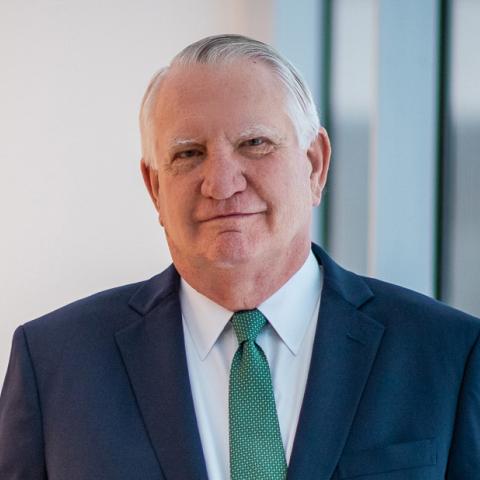When he assumed office in 2009, President Obama inherited a drug policy success of unprecedented dimensions. Cocaine, heroin, methamphetamine, marijuana, and misused opiate prescriptions were all under control or declining. The drug threat, especially for youth, was substantially smaller. That tide of achievement is now reversing.
At the end of the Bush years, youth use of marijuana had declined 25 percent, aided by an effective national media campaign. Youth use of cocaine and heroin had also declined, while psychedelics had plummeted even further, as Ecstasy and LSD collapsed. These achievements, measured by surveys, were corroborated by nationwide workforce drug testing, where rates of positives were in decline.
Nationally, prescription opiate misuse peaked in 2006, and the Combat Methamphetamine Act of 2005 resulted in steep declines in not only meth use but in the number of toxic labs that produced it.
Internationally, the major source of U.S. heroin and cocaine had been brought under control. Heroin produced in Colombia had dropped so low that U.S. government observations had difficulty finding it.
Significantly, Colombian cocaine production, trafficked through Mexico and funding insurgents and criminal cartels, declined in an unprecedented achievement by nearly 75 percent through partnership programs of eradication, alternative development, and the provision of government security.
The effects, which include rescuing Colombia and stabilizing Mexico under the presidencies of Alvaro Uribe and Felipe Calderon, would further result in a 50 percent decline in U.S. cocaine use by 2011, driving down emergency department episodes, the need for drug treatment, and saving lives.
Moreover, persistent efforts to legalize marijuana in the states had been turned back, under White House leadership, and youth surveys reported a high awareness of the risks involved in using the drug, an important factor in prevention efforts.
This was the situation when Mr. Obama took office.
Over six years, the Obama administration has neglected drug control at home and abroad. While they have emphasized prevention and treatment in numerous statements and speeches, these promises have largely been unmet. Efforts to counter the drug supply have been nearly eliminated, with devastating results.
Not everything under Mr. Obama has failed. Prescription opiate abuse has continued downward, while drug treatment has been hitched to Obamacare, contingent on its (perhaps faltering) fate. The administration extended a Bush effort to distribute naloxone as an antidote to opiate overdose, and completed the enrollment of states in prescription monitoring programs (again, an effort begun under President Bush).
But administering temporary antidotes will not suffice if a community is flooded with high-potency heroin, nor will promised treatment be utilized if legalized drug access undermines incentives for recovery. Today, the effort to control the supply of drugs, now declared futile as policy, has turned into a surrender.
The impact is widespread. Interdicting the movement of drugs to the United States has been curtailed, while Latin American transit countries are being destabilized and suffer from increased drug flow.
Mexican marijuana still flows across our borders, with the additional threat that cartels now control marijuana operations inside the United States, even providing the market in legalized states.
Even more devastating, Mexican cartels have sharply increased the production of methamphetamine and heroin. Seizures of these drugs at the Southwest Border have skyrocketed since 2009.
Methamphetamine trafficking and use is again climbing after a sharp decline, while heroin is now the greatest drug threat reported by law enforcement to the Drug Enforcement Administration, with purity and potency of both drugs spiraling upward, and an epidemic of heroin overdose deaths, up 39 percent since 2012, causing alarm at the Centers for Disease Control. These drugs are literally flooding U.S. streets.
In a further blow, government sources for 2014 report a resurgence in cocaine production in Colombia, for the second year running (up 48 percent), portending more revenue for transnational organized crime and narco-terrorists, as well as increased suffering in American communities (cocaine overdose deaths already up 12 percent).
In a final disaster, the administration has abetted the commercial legalization of marijuana for recreational purposes in several states, and even the U.S. capital. International partners are reeling at our lost moral authority, while youth perceptions of risk have collapsed, as this drug, the potency of which in new forms is reaching 70-80 percent of the intoxicant THC, is spreading nationwide.
Workplace drug testing positives are now soaring nationally, while daily use of high-potency marijuana is rising sharply year over year. To the extent that the gateway effect is realized, heavy youth use of this drug could drive greater use of all the others. The effects are producing a public health threat of the first magnitude, and youth are the first victims.
We are told that the “futile drug war” has been ended. In reality, the achievements of drug control were not futile, but contingent. To claim that policy is ineffectual, if you have given up the effort, becomes a self-fulfilling prophecy.
It will take much effort to dig our way out of this collapse. As a final blow, bowing to forces of legalization, this administration may oversee the institutionalization of these defeats at the United Nations General Assembly in 2016, by fostering the unraveling of treaties that constitute the international drug control regime, a protection for all nations.
If they do, legal drugs, and the security threats as well as public health impact that they summon, could be a lasting legacy of this presidency.



















